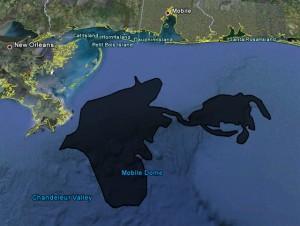

Audit of BP claims facility results in $64 million in additional payments
- from the New Orleans Tribune http://www.tribunetalk.com/?p=3343[/
The ever-corrupt Tom Coburn, who lives his life amid the lint of the deep pockets of big oil, big pharm and other big money spent on PAID-triots. It's no secret who buys members of the House and Senate to do their bidding.
And it's no secret that Coburn, leaving this year due to ill health, has NEVER really been against waste. He's just a hatchet man for his buyers, a long term buy-to-lie guy.
On his way out the door, he's done his donor's bidding one last time, this time via the right wing propaganda machine over at Fox (not really)News. It's good to use Fox to lie to the gullible conservatives; neither Fox, nor the Conservatives who consume their drivel, will ever fact check anything. They tend to be science illiterates on both sides of the television - the sending and the receiving, and they are consistently wilfully ignorant.
Let's look at the recent Fox dishonest headline:
$10G to watch grass grow: Coburn report details worst examples of gov't wasteSo.......IS the government wasting money on Spartina alterniflora, just 'watching grass grow'? OR is there a connection to Coburn trying to discourage funding something useful on behalf of big oil, again?
As American taxpayers worried about the terror threat from the Islamic State, the crisis at the border and the economy, the U.S. government spent their money to give rabbits massages, to teach sea monkeys to synchronize swim and to literally watch grass grow.
These and other examples of wasteful government spending were detailed by Republican Sen. Tom Coburn in his annual “Wastebook,” his final edition since he is retiring early next year.
...Other examples vary from the serious, to the aggravating, to just plain bizarre. One that takes the cake is the $10,000 the government spent to watch grass grow --- seriously.
That project is the brainchild of the Department of Interior’s U.S. Fish and Wildlife Service, which is paying for the growth of the smooth cordgrass to be observed on a Florida reserve. The money covers “the cost to monitor grasses, restore two acres as a demonstration and publish a guide on best practices for cultivating the cordgrass, known formally as Spartina alterniflora.”
Guess.
Here is the actual study, INCLUDING the actual purpose, which is completely and totally different from the description of the research in Coburn's 'wastebook'. The biggest waste here is the wastebook itself.
Here is the link to the study and the information about this very special kind of grass, with some excerpts below of the pertinent parts:
Smooth cordgrass provides cover for waterfowl, wading birds, shorebirds,A little context for why this is necessary:
and muskrats; and habitat for commercially important fish and shellfish.
VALUE FOR REHABILITATION OF DISTURBED SITES :
Smooth cordgrass was direct-seeded successfully on damaged marshes found
on dredge spoils from Connecticut to Virginia. Lower littoral zones
were seeded in locations where heavy wave action caused by storms did
not erode away the often top-heavy plants before their root systems
developed sufficiently. Smooth cordgrass seeds and seedlings were also
planted successfully on dredge spoils produced in the maintenance of
navigational channels within sounds and estuaries
Smooth cordgrass is an important component of Gulf Coast salt marshes
which stabilize shorelines against erosion and filter heavy metals and
toxic materials from the water column [13].
The presence of smooth cordgrass indicates sites with high salinity,
which can be managed for shrimp ponds [20].
OTHER MANAGEMENT CONSIDERATIONS :
Gulf Coast marshes, because they provide soil stabilization and enhance
water quality, receive the highest priority for protection in
comprehensive oil spill response plans for coastal areas [13]. Effects
of oil spills on salt marshes vary depending on oil type, plant
coverage, season, and marsh elevation [24]. Flushing with seas water is
the most effective clean-up method for oil-contaminated salt marshes at
present. However, once oil penetrates the sediment, not even flushing
will remove it. Flushing is also ineffective at reducing damage to
cordgrass and enhancing long-term plant recovery. If natural tidal
flushing occurs, no other clean-up measures are recommended because
impacts on the community cause more harm than good. Overall, clean-up
responses have limited effectiveness; therefore, primary emphasis should
be placed on contingency planning and protection of salt marsh habitat
from oil spills.
http://oceanworld.tamu.edu/resources/oceanogr...Catch the part about the damage from the canals?
Coastal erosion is a problem for those who live near coasts and for marine organisms living along the coast in bays, estuaries, and shallow waters. We have seen that beaches change with the seasons, and that tsunamis and storm surges can erode coasts. How important is coastal erosion? Are we making it better or worse? What causes erosion? Can it be prevented? Or do we want to allow erosion as a natural process?
Many coastal areas are facing chronic long-term shoreline erosion problems. This is especially a problem along the low-lying barrier island systems of the Gulf and Atlantic coasts. Average erosion rates are 6 feet per year along the Gulf and 2 to 3 feet per year along the Atlantic. Some coastal areas may be accreting in the short term, but the general trend is in the direction of shoreline retreat.
Beatley, Brower, and Schwab (2002).
Examples of Episodic and Sporadic Coastal Erosion
Erosion by Hurricane Rita
Coastal damage at Gulfport by Hurricane Katrina. Notice in photos houses just inland were not as damaged as beach houses.
Erosion in the Florida wetlands
Erosion due to Hurricane Dennis.
Erosion due to Hurricane Andrew
Damage by Hurricane Jeanne
Damage by Hurricane Ivan
The Mississippi Delta is Rapidly Eroding
Deltas are normally slowly increasing in size due to sediment deposited by the river. The slow increase is due to a slight imbalance between sedimentation by the river, and sinking of the delta due to consolidation of deeper sediments. The balance has been upset by the construction of levees and dams along the Mississippi River leading to rapid sinking and landward erosion of the coast along the Mississippi River delta in Louisiana. It is the most rapidly eroding coast in the USA. Since 1900, about 4900 km2 of wetlands in coastal Louisiana have been lost at rates as high as 100 km2/year. The rate was 90 km2/year for the 1978-90 time period.
The rapid erosion is due to several factors, the first two being the most important:
The construction of levees along the lower river that channel water and sediments past New Orleans and out into the Gulf. This has stopped sedimentation throughout the delta, and the delta is now rapidly sinking below sea level. If the levees did not exist the river channel carrying most of the river water would change position, and deposit sediments throughout the delta. With levees, land subsidence of 4 to 4.3 feet per century for the deltaic plain and 1.3 to 2 feet per century for the chenier plains in western Louisiana is not balanced by sediment from the river – from LaCoast maintained by the US Geological Survey.
Location of Mississippi River channels discharging water into the Gulf of Mexico over the past 5000 years. Notice the location changes from time to time, keeping the all areas of the delta supplied with sediments that balance the natural sinking of the delta. Today, two-thirds of the flow are through the Bird Foot Delta (6) and one third through the Atchafalaya (1). From Day et al (2007).
The dredging of many canals to provide access to oil and gas wells. The canals help salt water reach further inland, resulting in death of trees and vegetation that stabilizes wetlands. Wind blowing along the canals produces waves that erode the banks. And, storm surges produced by storms travel along canals causing erosion further inland.
Wetlands and coastal features are composed mostly of silts and clays that are easily eroded.
Coastal features have little vertical relief.
Coastal Erosion is Aggravated by Man-Made Structures
To limit flooding, and to store water, governments build dams. To prevent loss of coastal land and buildings governments and property owners usually resort to building structures to hold back the sea and to prevent loss of sand. These structures do more harm than good over the long term.
The dredging of many canals to provide access to oil and gas wells. The canals help salt water reach further inland, resulting in death of trees and vegetation that stabilizes wetlands. Wind blowing along the canals produces waves that erode the banks. And, storm surges produced by storms travel along canals causing erosion further inland.Now stop for a moment, and ask yourself........who do you think are some of Coburn's BIGGEST donors? Who do you think it is that is paying Coburn to lie about this study, in an attempt to discredit it and quash it?
It probably won't surprise you to learn that the oil & gas industry, led by Koch Industries, has been Coburn's third-largest source of campaign funds. If that does surprise you, here's an explanation of how things work, courtesy of a longtime observer of Congress:WHO is that quote from?
"Many tax preferences are little more than corporate welfare, designed compensate for our country's high tax rate. Inevitably, these exceptions tend to favor those companies and groups with close ties to lawmakers and access to the most experienced lobbyists. Without such access, small businesses and the middle class often bear the burden of the high standard tax rates while the wealthy and powerful receive a vast array of deductions, credits, and other preferences created by Congress."
YOU GUESSED IT -- crooked Sen. TOM COBURN!
